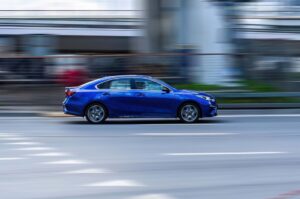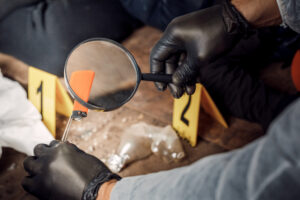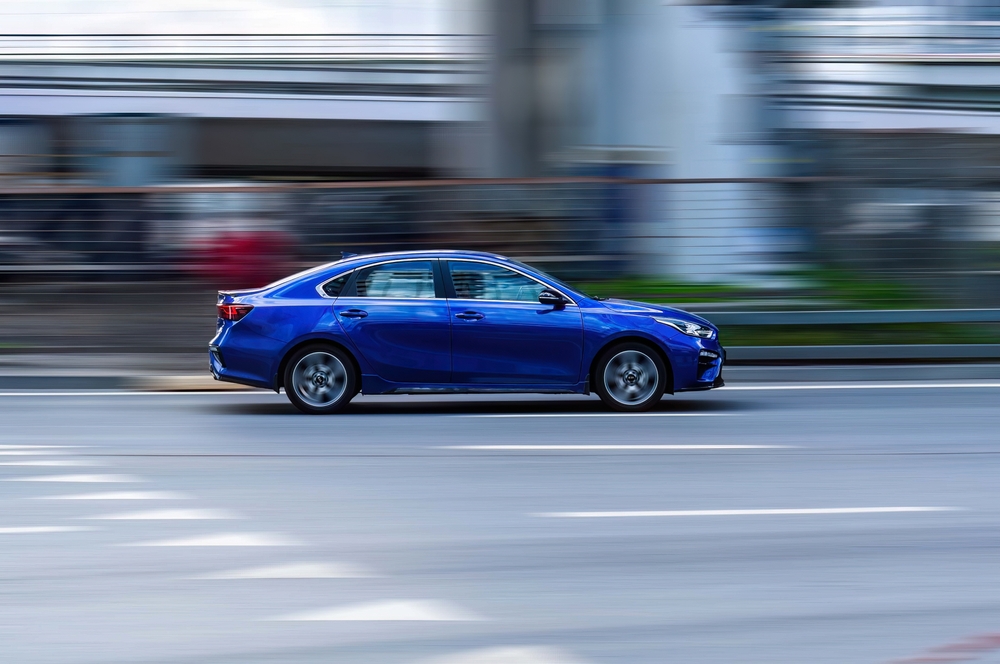Evidence is key in a car accident claim because it shows what happened, who was at fault, and what will likely occur in the future as a result. Insurance adjusters, judges, and juries aren’t first-hand witnesses to these accidents, so they rely on the available evidence to form their opinions.
As such, the outcome of your case depends on having a trusted Hammond car accident lawyer who can gather and review as much of this evidence as possible.
Common Types of Useful Evidence in Car Accident Cases

Accident Scene Photos
Accident scene photos provide clear visual evidence of the accident site. They can show the positions of vehicles, road conditions, traffic signs, and any debris or skid marks from the accident. These photos help investigators understand how the collision happened.
Lawyers, courts, and insurance companies use photos to assess damage and liability. For example, photos showing a lack of skid marks behind a vehicle could suggest that its driver never applied the brakes and could be at fault for the subsequent collision. They also allow experts to reconstruct the accident during legal proceedings.
Clear, time-stamped photos can strongly support your claim by providing proof of the scene’s condition right after the accident.
Video Footage
Video footage taken by dashcams, surveillance cameras, or bystanders offers real-time evidence of the accident occurring. This footage can capture the accident’s sequence of events, the behavior of each driver, and the ambient road conditions. It shows exactly what happened without relying on people’s memory, which is often unreliable and easy to sway.
For instance, video footage could prove whether a driver ran a red light or was speeding before the collision. This footage is often a decisive factor in determining fault in court or insurance claims. Video evidence can also disprove false claims from the other party involved in the accident.
Eyewitness Statements
Eyewitness statements from people who saw the accident provide independent accounts of the event. These statements can confirm details about the accident, like the direction each vehicle was traveling, their relative speeds, and the drivers’ actions.
Eyewitnesses can also provide information that doesn’t appear in photos or videos, like weather conditions or other drivers’ behavior before the crash. Their testimonies can support or challenge the claims of the drivers in the accident. In legal cases, a credible eyewitness can strongly influence the outcome by providing a third-party perspective of the accident.
Medical Records and Bills
Medical records and bills are essential for proving the extent and nature of injuries from a car accident. These documents provide detailed information about injuries, treatments, and medical expenses. They are key in proving that a person’s injuries directly relate to the accident.
For example, medical records can show if injuries require immediate treatment after the accident, linking them directly to the event. This evidence is essential for claiming compensation, as it allows attorneys to calculate fair compensation for medical costs, pain, suffering, and more.
Expert Witness Testimony
Expert witness testimony in a car accident claim comes from professionals like accident reconstruction experts or medical doctors. These experts use their specialized knowledge to explain complex issues, particularly to jury members who might not understand them otherwise.
For example, an accident reconstruction expert can analyze the crash details and explain what caused the collision. A medical expert can detail how certain injuries result from the accident and what their prognosis is likely to be.
This testimony allows judges and juries to understand the technical aspects of the case. Expert witnesses’ opinions carry significant weight because they rely on years of experience and knowledge. Their insights are often critical in proving fault and the extent of injuries in a car accident claim.
Vehicle Damage Reports

Cell Phone Records
Cell phone records are key evidence in some car accident claims. They can show if a driver was using their phone at the time of the accident. Phone use while driving is dangerous, and it is also illegal in many areas.
Records that show that a driver was texting, calling, or browsing at the time of the crash could prove that driver’s negligence. This evidence is sometimes decisive in establishing fault. Even if the activity was not illegal, it could demonstrate a lack of attention to the road, which is a major cause of accidents.
GPS Data
GPS data from vehicles, smartphones, or standalone navigation devices can provide critical information about a vehicle’s exact location, speed, and direction before and during the accident. It allows investigators to establish each driver’s route and behavior leading up to the collision.
For instance, if GPS data shows a car was speeding or took an unexpected route, it could indicate that vehicle’s driver behaved negligently. This evidence is sometimes valuable in reconstructing the accident and proving or disproving the drivers’ statements. GPS data adds a layer of factual information that can influence the outcome of a claim.
Traffic Citations
Traffic citations that relate to the accident can provide strong evidence that someone broke a law, making them negligent per se for the crash. Citations are official police records of presumed violations of traffic laws by one or more of the drivers in an accident. For example, a citation issued to a driver for speeding could establish that their unlawful behavior contributed to the accident.
As such, a traffic citation could be a key factor in deciding liability in court. It serves as independent evidence of a driver’s negligence or violation of traffic laws, which allows judges and juries to determine responsibility for the collision.
Weather and Traffic Reports
Weather and traffic reports provide crucial context for a car accident claim. They show the ambient conditions at the time of the accident. For example, a weather report showing heavy rain or fog could indicate reduced visibility or slippery roads, factors that frequently contribute to accidents.
On the other hand, traffic reports can show congestion or other accidents that might have affected driving behavior. Lawyers and insurers use this information to understand the external factors influencing the accident, which is important for determining liability.
Road Condition Reports
Road condition reports are key to understanding the environment where the accident occurred. These reports detail issues like potholes, construction zones, or improper signage that could contribute to an accident. A report showing poor road conditions at the accident site could indicate these factors played a role.
Evidence from road conditions reports can shift some blame away from the drivers to the entity responsible for road maintenance. In legal cases, road condition reports establish if external factors aside from driver error led to the accident, affecting fault and compensation determinations.
Accident Reconstruction Reports
Accident reconstruction reports are diagrams from experts who analyze crash details to determine how and why an accident occurred. These reports use evidence like vehicle damage, skid marks, and witness statements to provide a scientific explanation of the accident.
For instance, these reports can show the presumed speed of each vehicle before the collision or the precise point of impact. This type of report is useful in court or insurance claims, especially when the fault is unclear. It provides a third-party analysis of the accident, which is useful in proving what happened and who is responsible.
Vehicle Maintenance Records
Vehicle maintenance records can affect a car accident claim by showing how frequently the owner arranged vehicle inspections, maintenance, or repairs. If a car had faulty brakes or worn tires that contributed to the accident, inconsistent maintenance records could indicate owner negligence.
These records are especially critical in cases where vehicle defects contributed to the accident. They can shift responsibility to a vehicle owner for not maintaining their car properly or to a manufacturer that put unsafe products in the market. Car accident lawyers can use maintenance records to argue that poor vehicle condition, rather than driver error, primarily caused an accident.
BAC and Toxicology Test Results
Blood alcohol content (BAC) and toxicology test results can show if a driver was under the influence of alcohol or drugs at the time of the accident, likely making them at fault. This type of evidence is highly valuable in establishing liability, as driving under the influence is illegal and dangerous under any circumstances.
It can also affect the amount of money available in an accident claim, as many jurisdictions allow for punitive damages in cases where an at-fault driver was drunk or drugged.
Employment and Income Records
Employment and income records are key to establishing the claimant’s earnings and work history. They allow investigators to calculate how much income the injured person lost while recovering from their crash injuries.
For example, let’s say work records show someone earned a steady and predictable income before the accident but couldn’t work for months afterward. In that case, these records make it easier to put a dollar figure on one aspect of what the accident cost the victim.
Social Media Posts
Social media posts can provide information about the drivers’ actions and statements before and after the accident. For instance, a post showing a driver at a bar before the accident could imply alcohol consumption and unlawful drunk driving. Alternatively, a post of someone who claimed to have suffered serious soft-tissue damage in an accident taking part in a sporting event might undercut their story.
Lawyers and insurers often check social media for such evidence. Posts, photos, or comments could either support or contradict the claims of those who were in the accident.
In some cases, opposing insurance adjusters or attorneys might even take social media content out of context to spin the evidence in their favor. Having a lawyer who can push back on these tactics can make or break the claimant’s case.
Physical Evidence

Do I Need a Lawyer for My Car Accident Case?
Yes. A lawyer has the skills and knowledge to handle your car accident claim on your behalf. They work diligently to maximize your payout and get you fair compensation for the harm you suffered.
Without a lawyer, you risk settling for less than you deserve or struggling to prove your claim against insurance companies with deep pockets and big legal departments.
Insurance companies are businesses, which means their eyes are always on the bottom line. They want to minimize payouts by making it tough for claimants to get the full compensation they deserve. A lawyer plays a critical role in negotiating with these companies and protecting your rights.
A car accident lawyer understands the legal system and knows how to use evidence effectively to strengthen your case. What’s more, they know where to find it and can access types of evidence that might be difficult for you to recover on your own.
For instance, they might use accident scene photos or video footage to clearly show what happened and who was at fault. They can also analyze police reports, eyewitness statements, and expert testimonies to build a compelling argument for your claim.
Medical records and bills are essential in proving the extent of your injuries and the costs you incurred as a result. A lawyer can accurately represent and include these expenses in your claim. They can also use employment and income records to calculate any income losses resulting from the accident, so you recover fair compensation for those, too.
Furthermore, a lawyer can navigate the tricky aspects of proving fault, especially when dealing with factors like adverse weather conditions or road issues. They know how to use evidence like crash diagrams, GPS data, and cell phone records to shield you from liability and demonstrate the other party’s fault.
